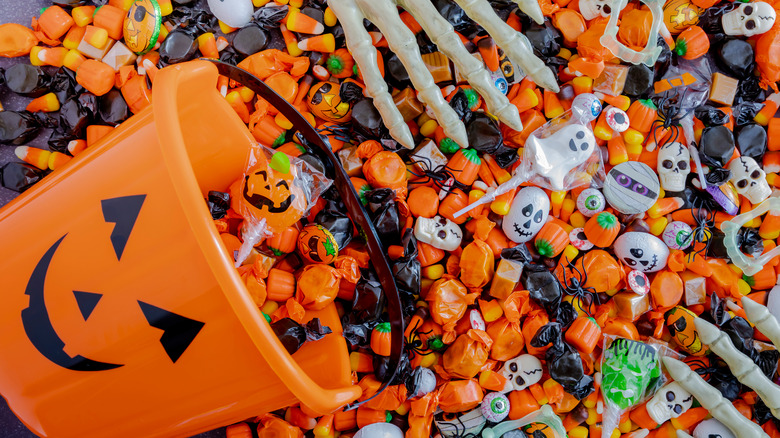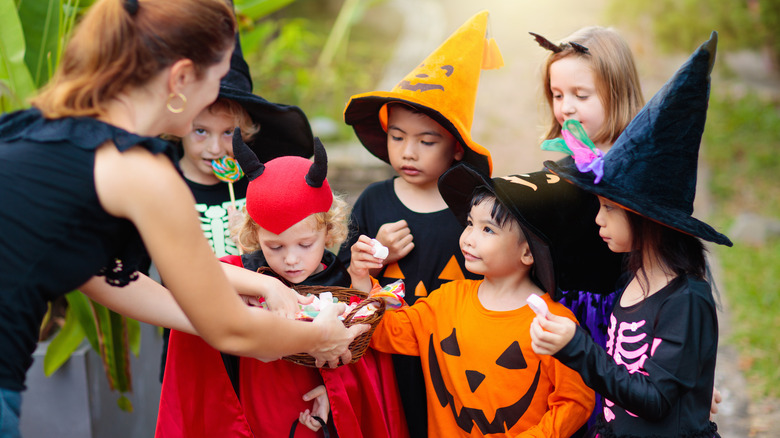The Real Reason We Give Away Candy On Halloween
Halloween is not only a fun tradition for both kiddos and parents, it's also a massively profitable one for candy companies. According to Fox Business, Americans were expected to spend a jaw-dropping $2.6 billion on Halloween candy in 2020. Perhaps more surprisingly, lots of that candy goes to waste, as much as $400 million of it — about $5 per tiny princess or pirate parading down your driveway with a foam scepter or sword.
That actually tracks when you think about how trick-or-treating long predates the days of swinging by Target to pick up candy for the neighborhood kids. In fact, History says the original form of trick-or-treating started over 2,000 years ago, during the "pre-Christian Celtic festival of Samhain." Seeking to "pay homage to the dead" as well as ward off "unwelcome spirits," some Celts "disguised themselves in costumes made of animal skins" and placed offerings of food outside.
So, how did we make the switch from attempting to keep demons and ghosts at bay with a nice al fresco buffet to handing out packaged candy to the kids next door?
It stemmed from parental fear
History also reports that other cultures later adapted and added onto the Samhain celebrations by performing tricks in costumes in exchange for food. While it's unclear how or when the requirement of a performance to get the treat when out the door, we do know that the treats themselves underwent somewhat of an evolution as well.
According to The Atlantic, the practice of trick-or-treating as we know it now is a relatively new concept. Even when the activity became popular in the United States around the 1930s and '40s, it wasn't just candy that was given out. Instead, kids could expect baked goods, small toys, and yes, even the dreaded piece of fruit.
Halloween candy became a thing in the 1960s and '70s, per The Atlantic, which reported that fear of children receiving harmful, homemade treats became prominent. The solution? Pre-wrapped commercial candy. Still to this day, parents check Halloween candy to be sure there isn't anything harmful mixed in. The candy tradition started because of this fear, and while it helped ease the minds of parents whose kids were originally getting homemade treats from strangers, the paranoia lives on.

